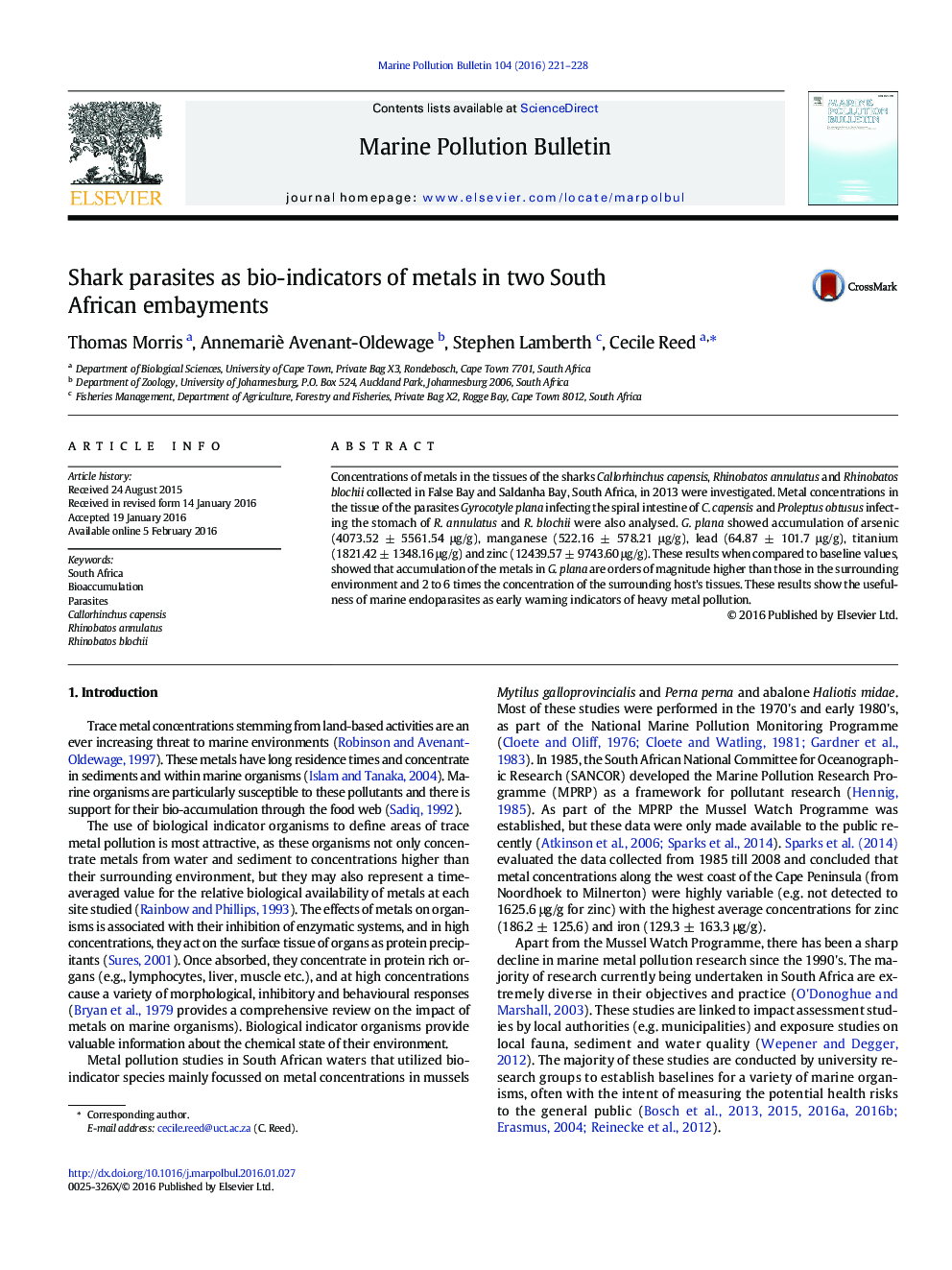| Article ID | Journal | Published Year | Pages | File Type |
|---|---|---|---|---|
| 6355851 | Marine Pollution Bulletin | 2016 | 8 Pages |
â¢Metal bio-indicators are proposed for Saldanha bay and False Bay, South Africaâ¢Callorhinchus capensis, Rhinobatos annulatus and R. blochii show high concentrationsâ¢Gyrocotyle plana concentrates metals 2 to 6 times the concentration of the surrounding host's tissueâ¢Sharks and their endoparasites are good indicators of heavy metal pollution
Concentrations of metals in the tissues of the sharks Callorhinchus capensis, Rhinobatos annulatus and Rhinobatos blochii collected in False Bay and Saldanha Bay, South Africa, in 2013 were investigated. Metal concentrations in the tissue of the parasites Gyrocotyle plana infecting the spiral intestine of C. capensis and Proleptus obtusus infecting the stomach of R. annulatus and R. blochii were also analysed. G. plana showed accumulation of arsenic (4073.52 ± 5561.54 μg/g), manganese (522.16 ± 578.21 μg/g), lead (64.87 ± 101.7 μg/g), titanium (1821.42 ± 1348.16 μg/g) and zinc (12439.57 ± 9743.60 μg/g). These results when compared to baseline values, showed that accumulation of the metals in G. plana are orders of magnitude higher than those in the surrounding environment and 2 to 6 times the concentration of the surrounding host's tissues. These results show the usefulness of marine endoparasites as early warning indicators of heavy metal pollution.
